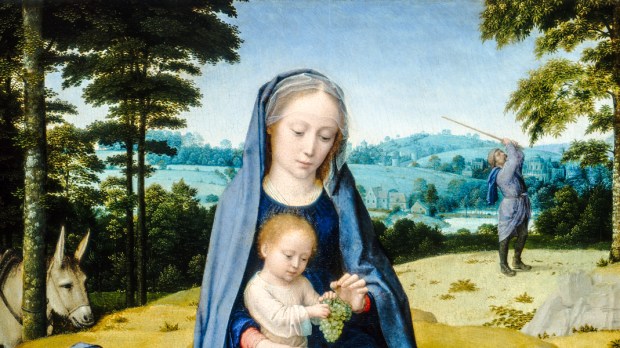Lenten Campaign 2025
This content is free of charge, as are all our articles.
Support us with a donation that is tax-deductible and enable us to continue to reach millions of readers.
When composing an outdoor scene, an artist might frame it with trees or place different kinds of tress in the background. While the trees that appear in Christian art may seem to be serving as background or placed for merely aesthetic purposes, certain trees also carry traditional spiritual associations.
Here are five popular trees in Christian art and their respective spiritual significance.
Aspen – The aspen is known for its quaking leaves in the wind, and various stories have arisen around this characteristic. One explains how when Christ died on the cross, all the trees bowed down in sorrow, but the aspen did not. On account of its pride it was forever doomed to tremble. Aspen trees may symbolize pride in paintings.
Cedar – The cedar tree is mentioned in the Old Testament and is frequently used in art as a symbol of Christ. In the Song of Songs, the bride (symbolizing the Church) describes her promised bridegroom (symbolizing Christ) this way: “His appearance is like Lebanon, choice as the cedars” (5:15).
Cypress – Even before Christianity, the cypress was seen as a symbol of death. It is a dark plant that once cut, does not spring up again. Images of cypresses are often found on early Christian tombs.
Elm – The elm is known for its beautiful appearance and marvelous spread of branches. For this it has become a symbol of dignity and faithfulness.
Oak – Some traditions claim that the wood of the cross was made out of an oak tree, giving it a special significance in Christianity. It is also viewed as a strong tree that can endure anything. Oak trees tend to symbolize faithfulness and endurance through every trial.

Read more:
5 Fruits in art and their spiritual symbolism

